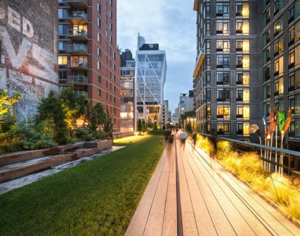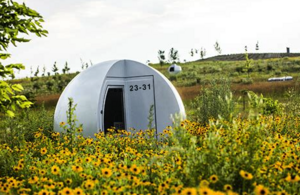Ecogentrification
This definition is the result of a collaboration between the HUB and the Parc Ex Anti-Eviction Mapping Project.
When greening projects are carried out in working-class neighbourhoods, it can encourage gentrification. The problem is not greening. Since greenery improves the quality of life, without measures to counter gentrification, real estate developers are delighted to be able to increase the value of their property. The greening of neighbourhoods can often only benefit people who can afford it.
Examples of ecogentrification
|
Highline, New York  |
MIL Campus, Montreal  |
Frédéric-Back Park, Montreal  |
Contradictions of ecogentrification
Greening policies generally lead to the displacement of local populations, resulting in an increase in daily travel and therefore GHG emissions. The densification which accompanies these policies tends to increase the local concentration of traffic. This is called the densification paradox.
Greening according to local needs
It is important that greening projects are guided by the needs of people who already live in the neighborhood, particularly people who have lived there for a long time, and not by the needs of real estate developers who wish to use greenery to attract wealthier populations. Community gardens are an example.
Improving social housing
For many organizations, including the CAPE (Parc-Extension Action Committee), slowing down gentrification inevitably involves the multiplication - and prioritization - of social housing in the neighbourhood.
The increase in rents generated by the MIL campus of the University of Montreal, which boasts of its ecological assets, could therefore be countered by the proliferation of social housing in the neighbourhood.
If you have any suggested revisions or additional resources to share related to the above content, please email them to kenzie@lehub.ca.
